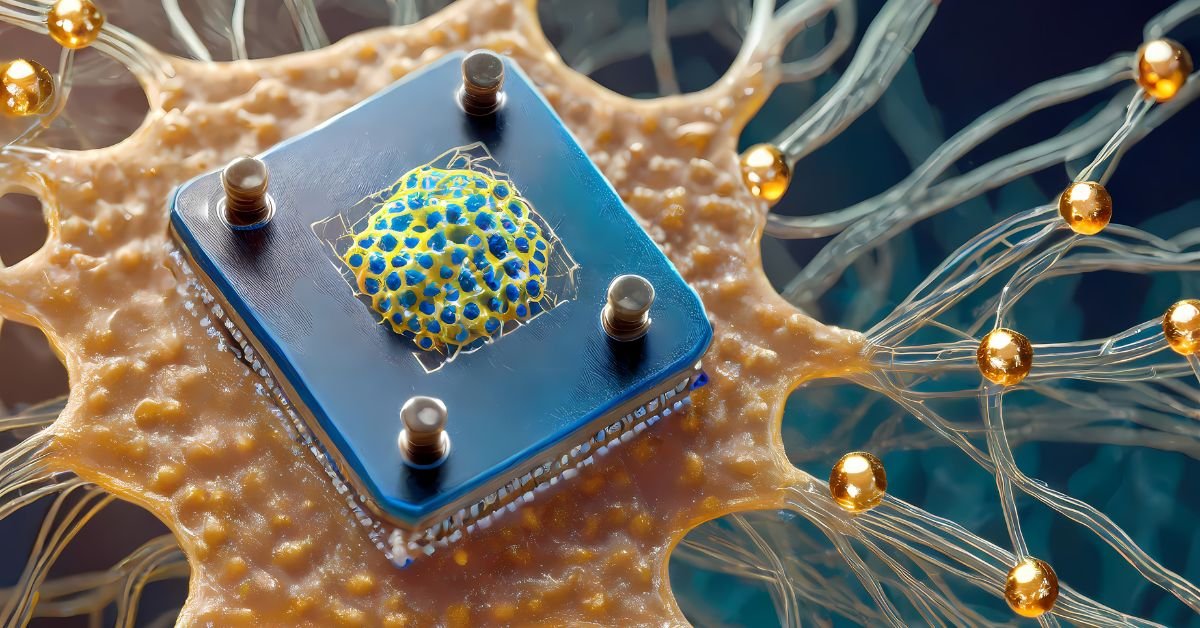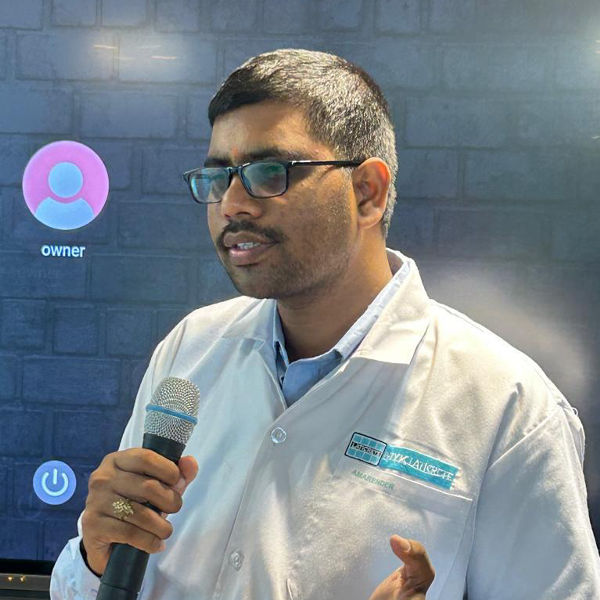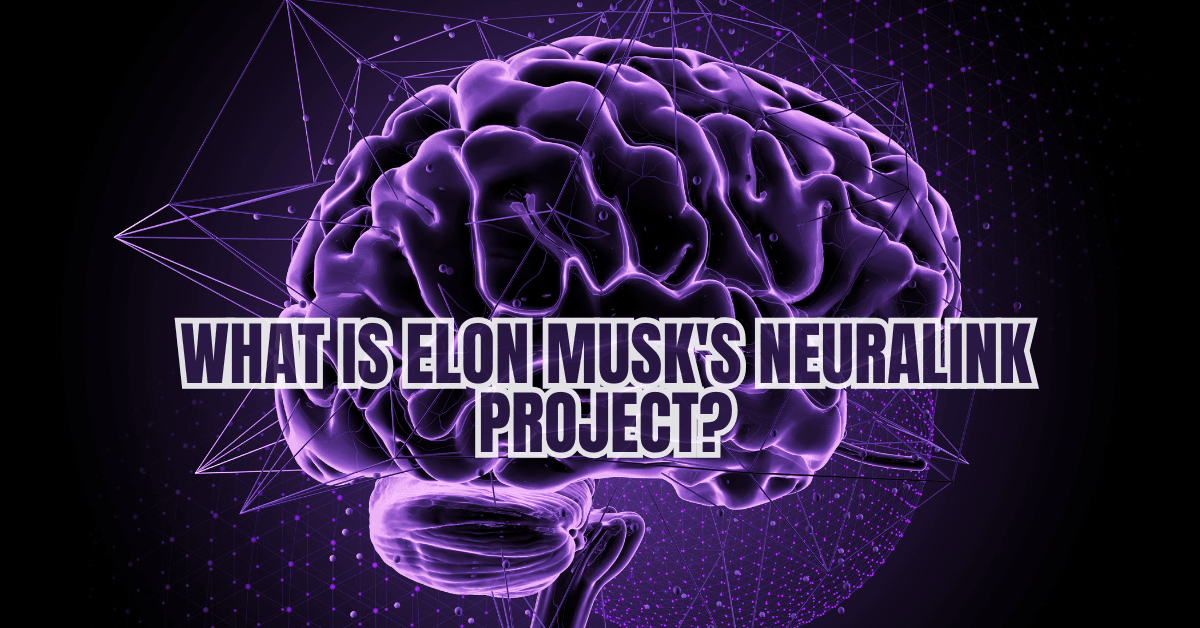Think of being able to manage your computer, phone, or even robotic arms and legs with just your thoughts. It seems like something out of a science fiction book, doesn’t it? Elon Musk’s Neuralink project is making this more likely to happen. Neuralink is a new type of brain-computer interface (BCI) that lets computers talk to the human brain directly. This technology might change the way people talk to each other, get medical treatment, and even how they engage with AI.
We’ll explain Neuralink in simple terms, talk about how it works, and give examples of how it may be used in real life in this post. This book will help you comprehend the essentials, whether you’re a tech fan or just interested in the future.
What is an interface between the brain and a computer?

A brain-computer interface (BCI) works like a translator between your brain and other devices. The picture below shows how electrodes pick up brain impulses and turn them into digital commands that computers or prosthetic devices can interpret. This lets people see how their thoughts can directly control technology.
Before we go into Neuralink, let’s first talk about what a brain-computer interface (BCI) is.
A BCI is a way for the brain to talk directly to an outside device. Our brains usually talk to one another through nerves and muscles. BCIs don’t use this natural method. Instead, they turn brain impulses into orders for computers, prostheses, and other equipment.
Your brain speaks one language, and the BCI changes it into a language that computers can understand.
Why BCIs Are Important
- Medical uses: Helping paralyzed patients utilize prosthetic limbs.
- Communication: Helping those who can’t talk to talk to other people online.
- Future AI integration: combining human thought with sophisticated AI systems.
Elon Musk envisions a future where Neuralink could merge human intelligence with AI, allowing faster decision-making and enhanced problem-solving. For those curious about boosting their brainpower to adapt to such advanced technologies, you can explore scientific ways to improve cognitive abilities, to better prepare for the future of human-AI interaction.
The Beginning of Neuralink
Elon Musk, the visionary businessman behind Tesla and SpaceX, started Neuralink in 2016. Musk has said many times that he is worried that AI will become smarter than people. He thinks that people need to “merge” with AI in order to stay relevant.
Neuralink wants to make a high-bandwidth, low-intrusion connection between people and computers. It seeks to let your brain and machines talk to each other quickly and easily without having to have big surgery.
How Neuralink Works

Neuralink’s cutting-edge technology employs small, flexible electrodes to take up impulses from neurons. This picture demonstrates how the threads are placed into the brain and linked to a computer. It shows how to turn ideas into digital commands that may be used.
Neuroscience, robotics, and AI all work together in Neuralink. The core notion can be conveyed in a few stages, even though the technology is complicated:
- Neuralink employs threads that are thinner than a human hair to implant small electrodes. These electrodes are put into the brain to pick up electrical impulses from neurons.
- Recording brain activity: The electrodes pick up information as neurons activate. Each signal is linked to a certain thinking, activity, or feeling.
- Translating signals: Neuralink’s AI programs turn these signals into commands that a computer or device can comprehend.
- Sending commands: The computer carries out the orders. For instance, manipulating a cursor on a screen or commanding a robotic arm.
Brain Wi-Fi is like
Think of your brain like a Wi-Fi router. It usually only talks to other parts of your body. Neuralink is basically a tool that links your brain to the internet so you can transmit and receive “data” straight from your thoughts.
Neuralink’s Most Important Features
Neuralink is different from other BCIs since it puts a lot of emphasis on speed, safety, and accuracy. Some of its most important aspects are
- Thin, flexible threads: These are less likely to hurt brain tissue than older, stiff electrodes.
- Robotic implantation: A surgical robot puts in electrodes with an accuracy of less than a millimeter.
- Wireless data transmission: No more need for big lines or extra apparatus.
- High-bandwidth interface: Can read thousands of neurons at once to make a thorough map of brain activity.
- It’s astonishing that Neuralink’s threads are thinner than a strand of hair, but they can still pick up signals from single neurons.
Current Uses
Neuralink is still being worked on, but the possible uses for it are already very fascinating.
1. Medical Care
- One of the first things to work on is neurological disorders:
- Paralysis: Neuralink might let people who are paralyzed use computers, phones, or robotic arms.
- Parkinson’s disease: It could lessen tremors by activating certain parts of the brain.
- Long-term, BCIs might help people learn better or get their memories back.
2. Talking
- Neuralink might make it possible for those who can’t talk or type to communicate directly through digital gadgets by using a thought-to-text interface.
3. Combining AI and people
- Elon Musk sees a future when Neuralink might combine human intellect with AI, making it easier to make decisions and solve problems.
Things to Think About and Problems
Neuralink has a lot of potential, but it also has a lot of problems to deal with:
- Safety: There are hazards involved with brain surgery, even when it’s not very intrusive.
- Ethics: The concept of linking brains to computers brings up issues of privacy and permission.
- Data security: It’s very important to keep vital neurological data safe from hackers.
- Technical problems: It’s still very hard to correctly decode complicated brain impulses.
Experts believe that it would probably take decades to completely integrate people with AI, although medical applications are making progress more quickly.
A Real-Life Example
Neuralink showed a pig named Gertrude with an implanted Neuralink device in August 2020. The gadget was able to measure brain activity that was connected to her snout movements.
- Neuralink later showed a monkey playing a video game with just its mind. These demonstrations show how the technology can turn ideas into movements without the need for physical input.
- You can operate a robotic hand, move a mouse, or even click on anything. It’s nearly like telekinesis, but with technology.
How Neuralink Could Change Daily Life
Even if widespread use is still a long way off, picture a few things that may happen in the near future:
- Computing without hands: Sending emails or operating your gadgets with your mind.
- Better prosthetics: arms and legs that move in a natural way when they get impulses from the brain.
- Brain-to-brain communication: Sending basic thoughts or sensory experiences straight to another brain.
- A useful tip: You don’t have to have a brain implant to comprehend Neuralink and how it will change the way people and AI interact in the future. It will be more and more useful to know about AI, neurology, and ethical tech.
Imagine controlling robotic arms and legs directly with your thoughts. This concept is closely related to advances in Next-Gen Robotics Powered by Artificial Intelligence, where AI and robotics are merging to create more intuitive, human-like machines.
In short
Neuralink is a groundbreaking brain-computer interface that seeks to link humans and technology. It turns cerebral activity into digital orders utilizing small electrodes, robotic surgery, and AI.
Main points:
- Neuralink is a way for computers and brains to talk to each other.
- Uses: medicine, communication, and combining humans with AI
- Safety, ethics, data security, and technological difficulty are all problems.
- Effect: Could change the way we think about assistive technology and healthcare forever.
- Neuralink shows how amazing BCIs are and how they might change the way people and machines interact in the future, even if they won’t be widely used for a few more years.
For those who are curious, here are the next steps:
If you wish to learn more:
- You may read about various BCIs, such as Kernel or OpenBCI.
- Learn the basics of neuroscience, specifically how neurons send signals.
- Check out Neuralink’s official website or YouTube channel for updates.
- Look at how AI can be used in healthcare and assistive technology.
If you learn about Neuralink now, you can get an idea of how people and robots can work together in the near future. It’s an interesting moment to see AI and neuroscience come together.
Disclaimer: This article is for educational and informational purposes only. The images, illustrations, and descriptions of Neuralink and brain-computer interface technology are for explanatory purposes and may not represent actual device specifications or medical procedures. Readers should not consider this content as medical advice or instructions for use.
Updated on September 4, 2025

Hi, I’m Amarender Akupathni — founder of Amrtech Insights and a tech enthusiast passionate about AI and innovation. With 10+ years in science and R&D, I simplify complex technologies to help others stay ahead in the digital era.



